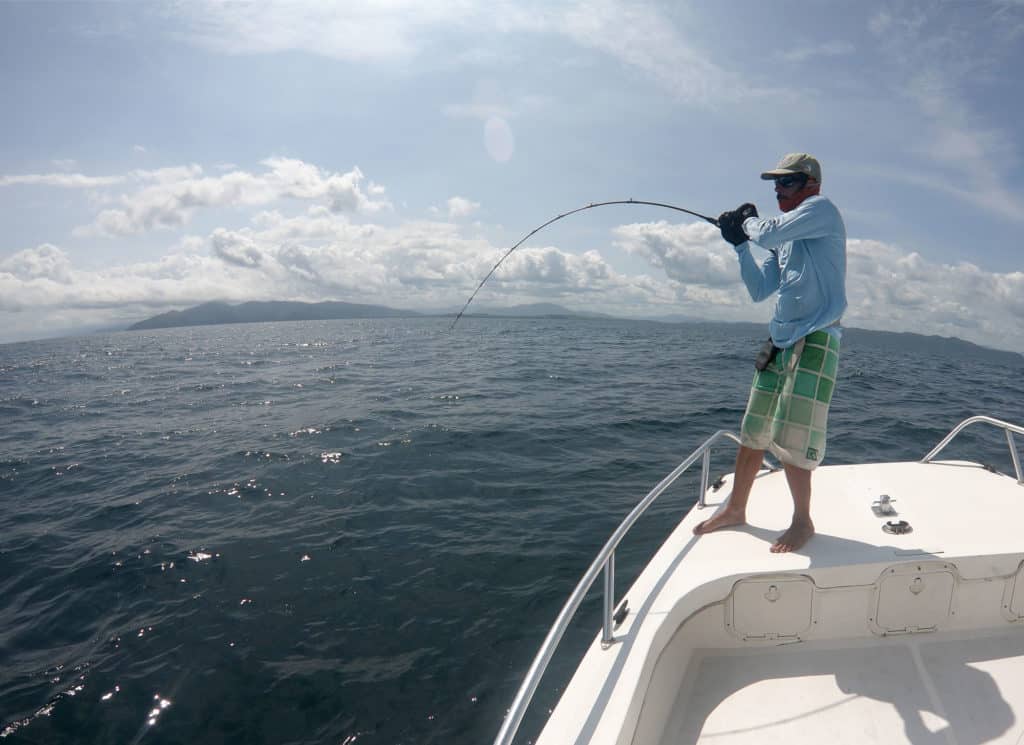
The French appreciate a good Bordeaux, a wedge of Camembert, a fresh baguette—and throwing poppers tirelessly for hours. Given that I haven’t spent much time in France, that description might well reek of stereotyping; however, I can vouch personally for the last item in the list.
French anglers who travel to fish tend to be all about popping and jigging.
Ditto French fishing-resort owners I’ve known, most recently Pierre-André Demauge in Pedasi, Panama.
A group of us flew down there for a week with a good idea what to expect, per the Panafishing website home page: “Our fishing lodge is the only one in Panama that caters exclusively to popping and jigging enthusiasts.”
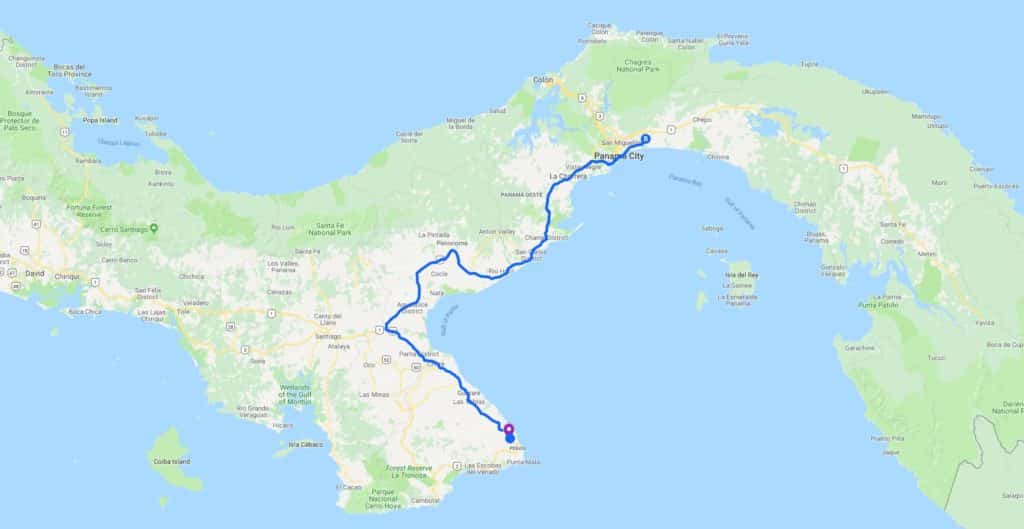
More explanation on the fishing states that throwing “artificials is definitely the most exciting and rewarding way to catch a fish, but it is also tiring and demanding, so one should come prepared and willing to cast and jig all day long.”
Each day, Demauge fished with our group, and we couldn’t help but be impressed with his enthusiasm and tenacity as he heaved heavy poppers from our first hour to our last. Though he lives here, his focus on hooking big fish was no less fanatical than that of us visitors.
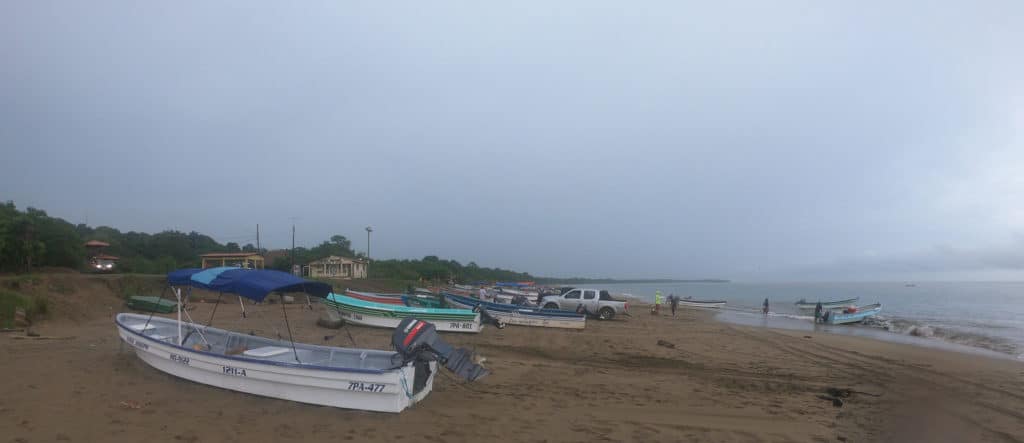
Explosive Testing Grounds
There’s nothing wrong with sitting back and watching a slow-trolled rod pulling a live blue runner, which no one can argue is damned effective. But that’s a very different kind of fishing. It’s hard to beat seeing a massive boil or blowup behind a big popper or shallow-running stickbait.
The promise of just such heart-stopping action out of these waters near Pedasi (about 100 miles due southwest of Panama City) that consistently produce massive cubera and huge roosters lured seven gringos here this past July. Among our group were Magnus Gunnarsson, Sam Root and Jose Chavez, all with Savage Gear, and Adrian Gray with the International Game Fish Association. Chavez’s main responsibility with the tackle manufacturer is designing lures, so he was keen to try out some of his creations in these tropical testing grounds. With a total of eight anglers, including Demauge, we divided up each day into three Panafishing boats—two 26-foot Twin Vees with twin Suzukis, and one of its two Caribe Pro 25s.
After an early breakfast, we piled into a pickup, with some ridiculous number of rods and reels strapped to racks on top, and headed the few minutes to the beach from which we would launch.
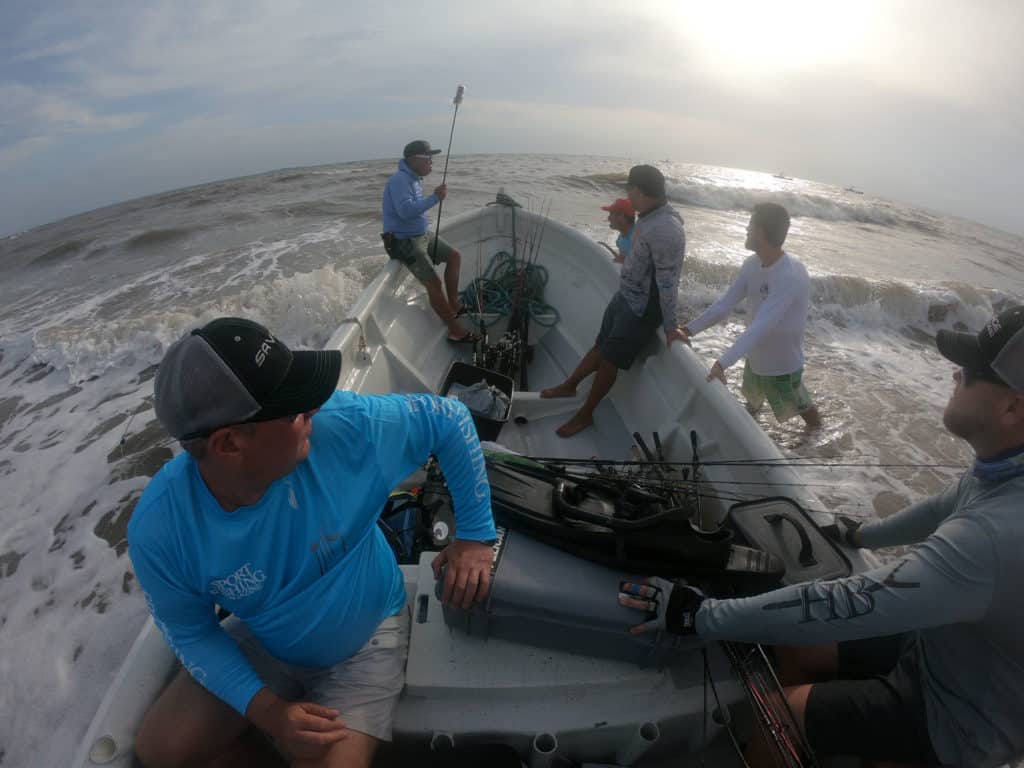
Don’t look for any marinas anywhere along this coast; except where broken by rocky headlands, sandy beaches extend endlessly. Pangas, used mostly for artisanal fishing, lined the beach where a road from Pedasi extends. Once there, we hopped down and helped transport tackle, coolers and insulated water jugs to the waiting panga that would ferry gear and anglers to one of the Twin Vees tethered to mooring buoys just beyond the beach.
Panafishing crew and staff helped hold the panga at the surf’s edge while being loaded. Then, with impeccable timing, they pushed the boat forward through the swells as the outboard operator quickly dropped and cranked up the engine. Fortunately, seas here seldom loom large. During a week’s stay, we had no problem getting out or back in.
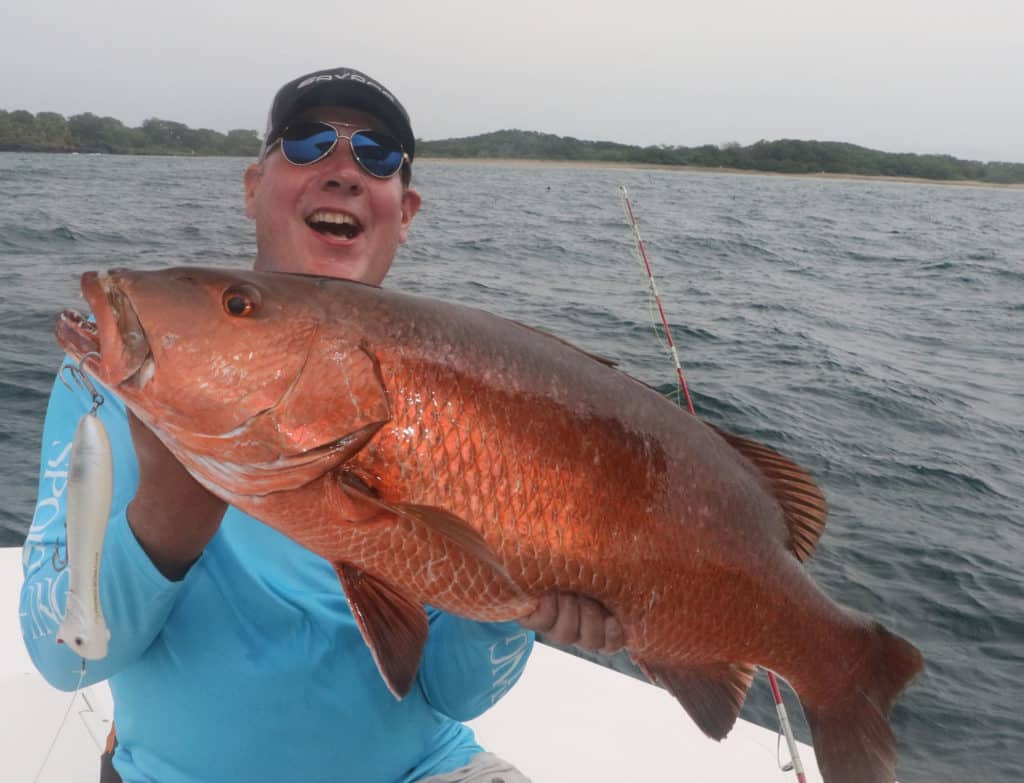
The Tuna Coast
One of Gunnarsson’s goals for this trip was to catch his first cubera snapper. While cubera were caught every day, the prize snapper eluded Gunnarsson during his first three days of fishing. I joined him on day four, the choppiest morning of all.
About midmorning, our skipper, Eduardo, moved us into friendlier water closer to shore, near a rocky point just south of the beach where we had launched. Gunnarsson, throwing a big Savage Gear Panic Popper, let out a shout, and I looked over to see a large, dark shape charging it near the boat. The fish missed but circled back, and this time nailed it.
With considerable effort, Gunnarsson managed to keep the snapper from the rocks, and soon he released his first cubera, a respectable if not monster 30- to 35-pounder. By trip’s end, cuberas up to 50 pounds had been released, and some considerably larger—and unstoppable—hooked.
Not long after, the breeze began to die out, and we moved south and offshore to a large island, essentially a great, sheer rock. Here we were reminded, as we had been on previous days, why some refer to this area of the Azuero Peninsula as the tuna coast. Yellowfin tuna swarmed in large areas, jumping after sardines. The schoolie-size fish all but made up for their modest heft with sheer numbers and lively action on top. We had great luck on smaller Panic Poppers and Savage Gear Mack Sticks (a stickbait introduced in 2019).
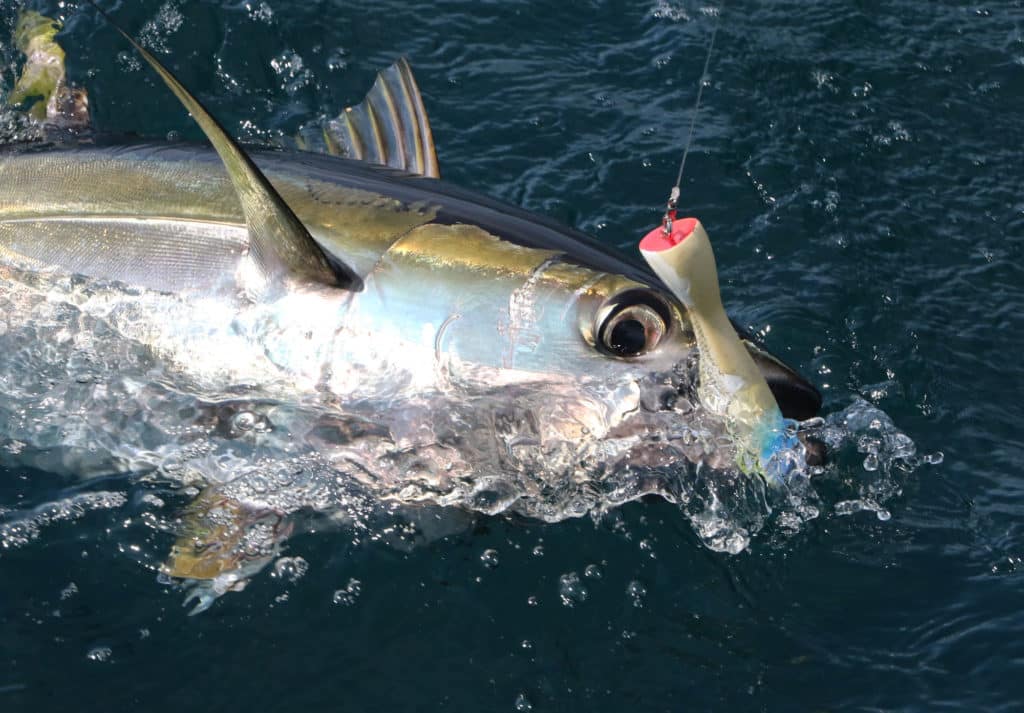
We had hoped to run 30 miles or more offshore to the serious tuna grounds, where schools of yellowfins well into three digits typically forage. But early on, conditions weren’t flat-calm, as is often the case, and Demauge suggested we wait for the right day. Unfortunately, that day didn’t come—maybe next trip!
While I had brought mostly serious gear, as anyone bringing tackle here should, I also brought a fairly small and light spinning rig with 30-pound braid and had a blast using it for these tuna. But one should be judicious using anything that light in these waters.
Later that same afternoon, back near Pedasi, in a shallow, sandy, quiet cove, I cast a tiny pink Savage Gear Sandeel from that rig, hoping for a corvina or small rooster. Naturally, I hooked what had to be an oversize snapper. I hadn’t a prayer of stopping its rush out to some rocks that I couldn’t see, but I felt when the line parted.
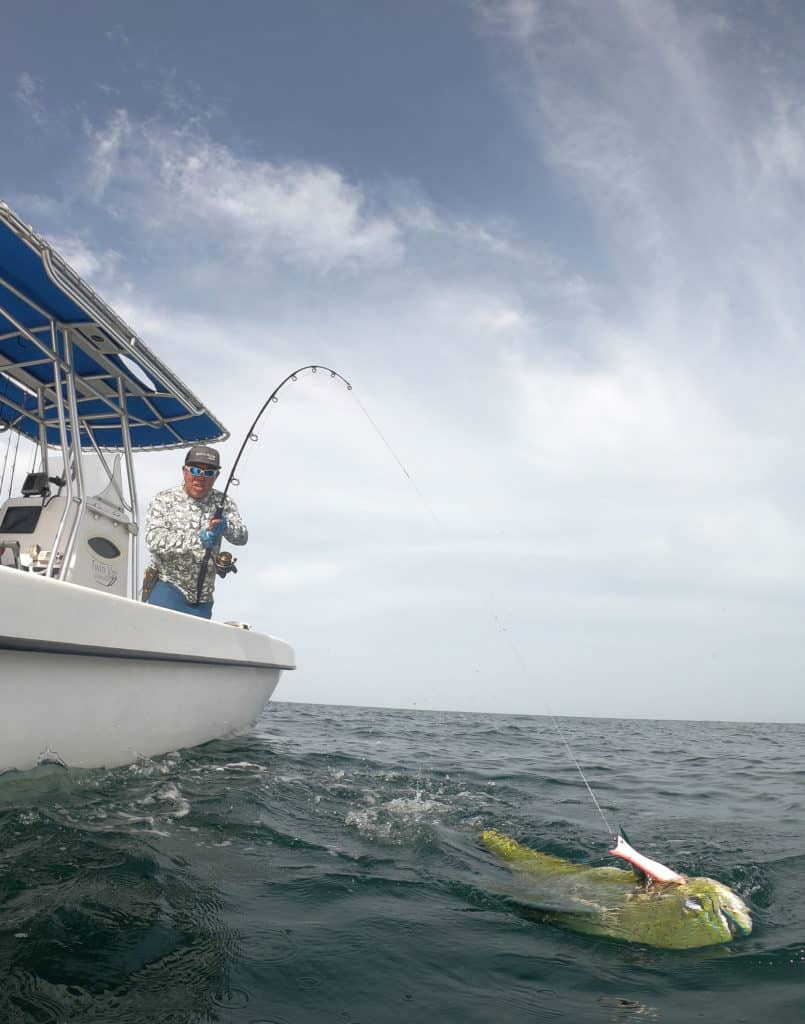
Surprise Party
Every day seemed to have its surprises. While casting a Mack Stick stickbait right against shoreline rocks, one angler hooked a respectable mahi. On our last day, we ran into a pack of large bull sharks roaming the same shoreline in quiet water.
Somewhat uncharacteristically, they aggressively rushed poppers and stickbaits, and when 300 or 400 pounds of bull shark explodes on a lure, it’s a major rush. Each one we hooked quickly proved a losing proposition—not surprisingly—and, after four break-offs, we resisted the urge to hook others or feed them any more lures, and moved on.
Several in the group spotted tarpon unmistakably rolling nearshore. They had no chance to hook them, but Demauge says it’s become fairly common for anglers to hook silver kings here, as it is along much of the Central American Pacific coast.
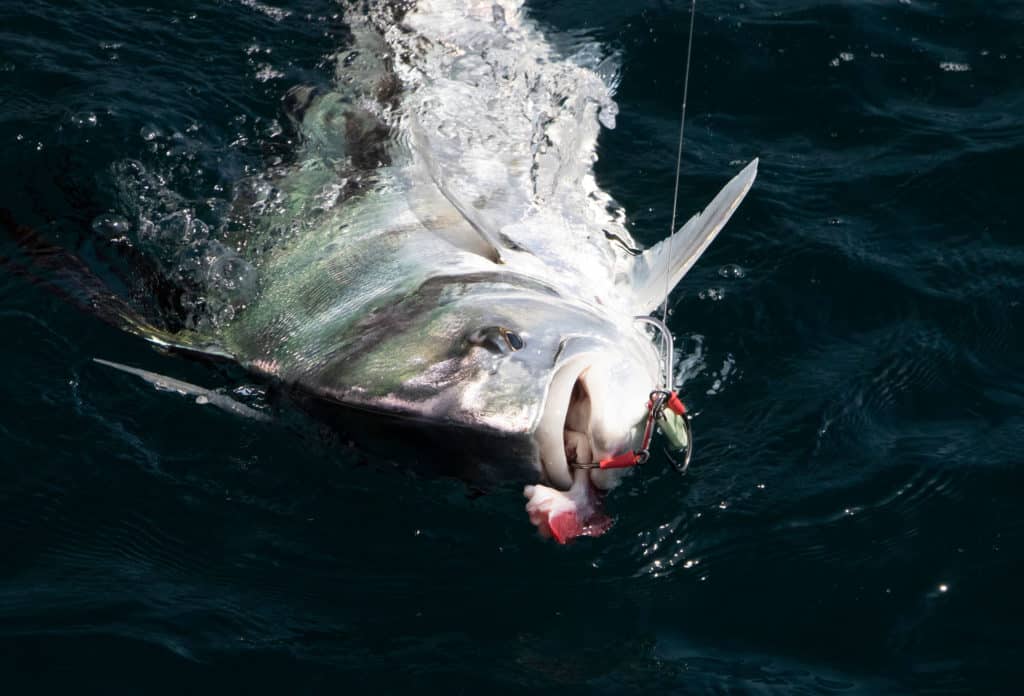
Besides cuberas, most in our group had roosterfish as an item to scratch off their lists, and most met that goal using various sorts of lures. Root caught one of the biggest roosters of the trip while throwing a Panic Popper. (While impressive, the 45-pounder couldn’t match the 80- to 90-pounders that have been caught on Panafishing boats.)
Mine came on the last day, when I decided to try a large Savage Gear Pulse Tail Mullet Swimbait. I was glad I did; the damned thing looked more like a swimming mullet than an actual swimming mullet, and apparently a rooster thought the same because, about 15 feet from the boat, it surged up to grab the soft lure. In another boat, Chavez landed a good rooster of 30 pounds or so when it struck a metal jig in about 90 feet of water.
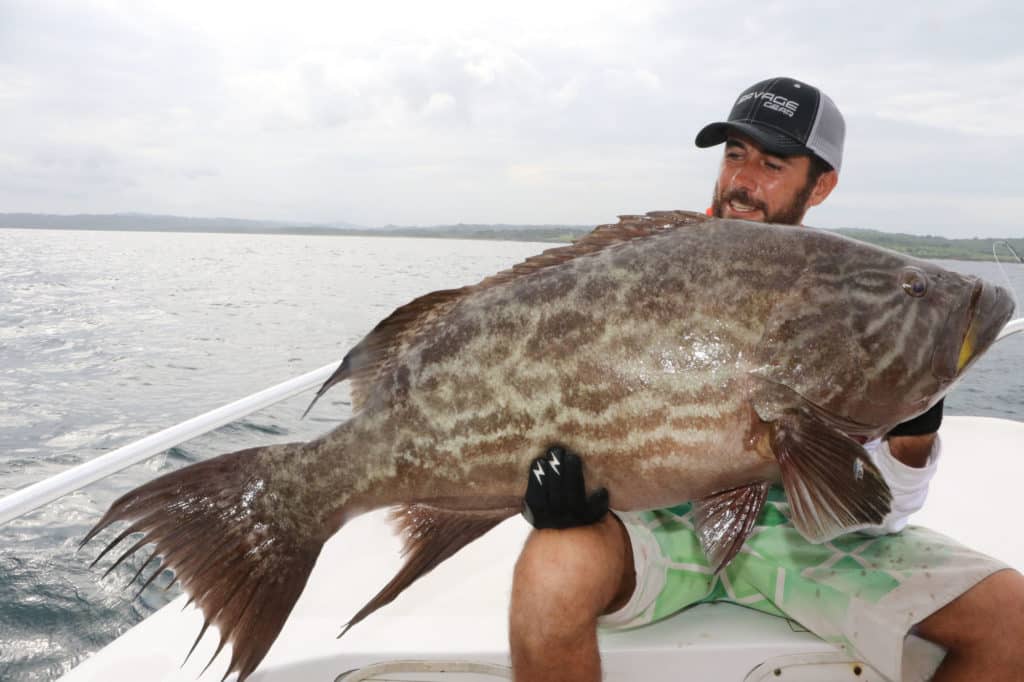
Miscellany on Metal
Most popping enthusiasts, it seems, are also fans of jigging. We had come fully prepared to do both, and we soon figured out that drifting and working jigs offered a welcome use of some alternative muscles from those used to throw large lures. And, as jigging always seems to, it got results, particularly for a variety of species.
Jig-caught fish included broomtail grouper, roosters, skipjack tuna, African pompano, cabrilla, yellow snapper, rose snapper, orangemouth and yellow corvina (at one point, on a large school in 90 feet, offering nonstop action), barred pargo, almaco jacks, jack crevalle and others.
We variously fished these metal lures as speed jigs or went with the finesse of slow-pitch jigging. Both methods caught fish. This gave us the chance to try out several varieties of Savage jigs, particularly the venerable Squish jig, as well as some newly introduced designs, generally in 50 to 200 feet.
Interestingly, on some days we drifted through dark clouds of bait that showed up on the sounder, even marking some larger targets around the bait, but didn’t get much. In other cases, even where not much showed, we hooked fish. The biggest prize for jiggers would have to be the broomtail grouper up to 50 pounds that we caught. At least one hefty grouper went for a soft-bodied TPE plastic 3D Swim Squid that Gray worked over the bottom.
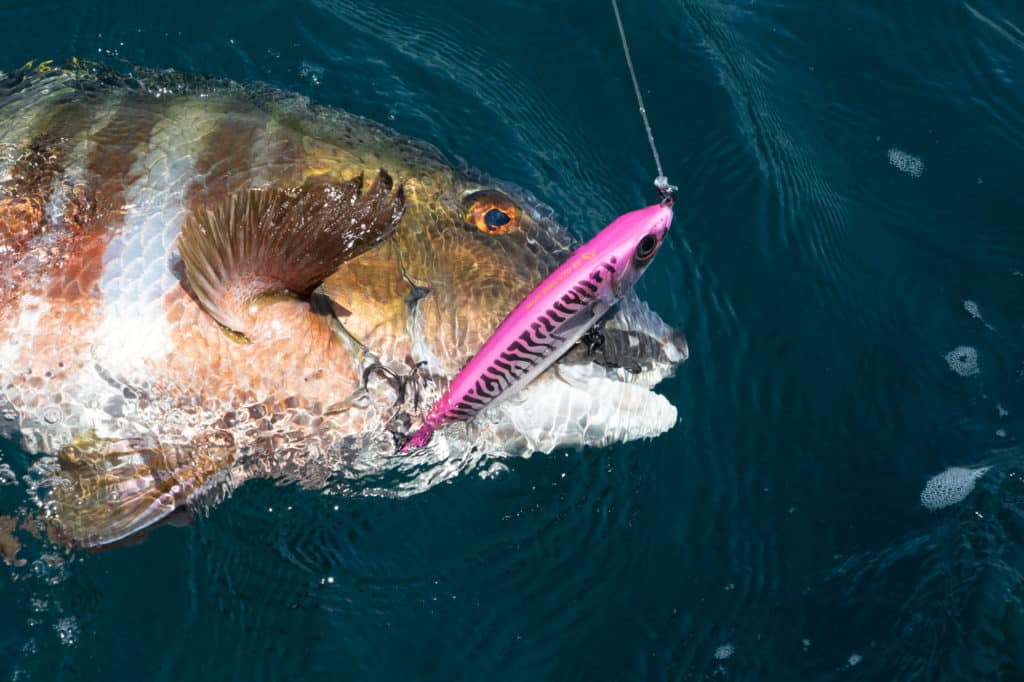
At the end of a busy week, after an early breakfast, we all loaded into the large van provided by Demauge for the six-hour drive to Tocumen Airport in Panama City for our afternoon flights back home, tired but happy. The Savage team, particularly, felt they’d gotten their money’s worth, having fished so many new or recent designs, and even prototypes, with so much success. For anglers who love the thrill of throwing big poppers and stickbaits, as well as speed- and slow-pitch jigging, Panafishing on Panama’s Azuero Peninsula merits a visit.
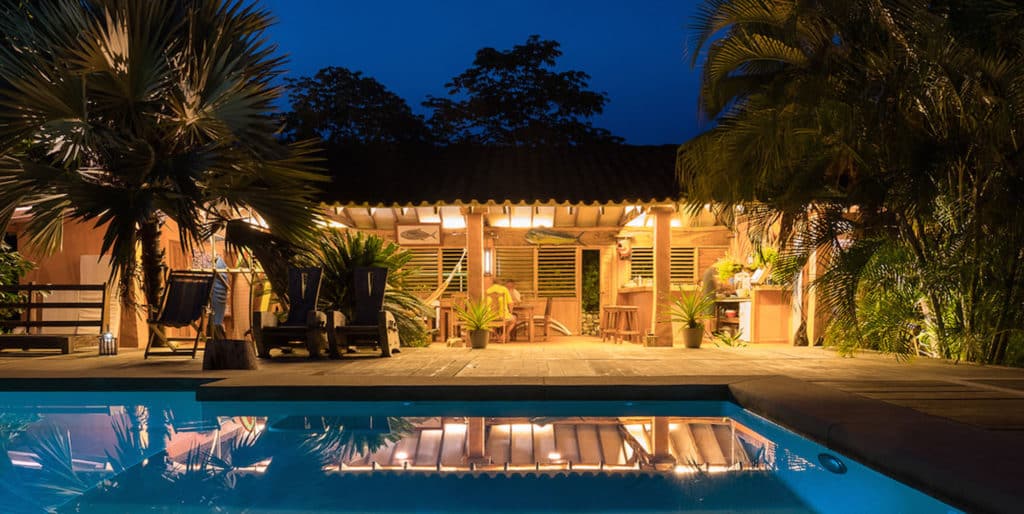
Planning a Trip
Most fishing resorts in Panama do a lot of live-bait fishing. Panafishing is all about lures and jigs. A visit to its webpage—panafishing.com[[please make link active]]—will offer immediate visual proof that the resort’s skippers put anglers on fish without ever bothering to bridle up live baits.
The six-hour air-conditioned van ride (with a stop for lunch) from Panama City means that if anglers can arrive in the country before midafternoon, they can go right to the lodge and skip the hassle of an overnight hotel stay.
The boutique-size lodge, which has been here since 2006, and its four boats can accommodate up to 11 anglers. Many guests bring their own gear by preference. Arriving by van means anglers can easily carry all their gear with them; that can be difficult—and costly—when flying from Panama City on a small regional-air flight. As an alternative or supplement to anglers’ tackle, the resort rents gear for a modest price—quality gear such as Shimano Stella and Saragosa reels and Black Hole rods.
Many fishing resorts in Panama provide tackle; however, most charge more for a week of fishing (sometimes considerably more) than Panafishing.
The absence of ports or access to the coast in the entire area helps keep fishing pressure low. Panafishing is closed only during September. During the dry season, January through April, anglers need not worry about rain, though the winds might kick up some days, which can limit fishing to various semi-protected areas, depending upon wind direction.
What Demauge calls the “green season” runs from May through November. At least some rain is likely, but so are the lightest seas of the year, with the Pacific often flat-calm. This is the best time of year to pursue surface-feeding yellowfin, from footballs to industrial-size fish.
Most of the captains have been with the resort for more than 10 years; they don’t speak much English but definitely speak fishing. Still, anglers lacking rudimentary Spanish can use a list of the most useful and essential words and phrases, which is available on each boat.








